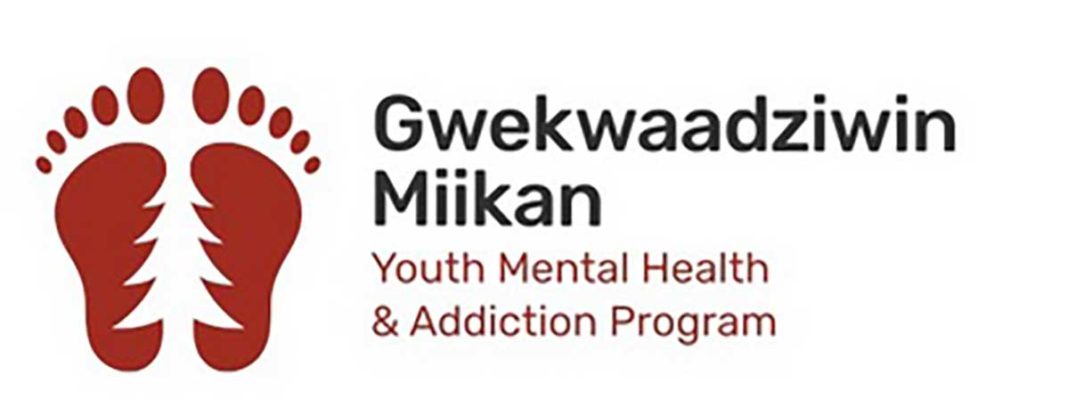AUNDECK OMNI KANING – Starting a pilot project that provides residential land-based healing for adults over 30 years in the middle of a pandemic has not been without challenges, while the need for Gwekwaadziwin Miikan’s (Gwek) programming may have actually increased during this time. For the second time since the pilot began last spring, Gwek has received funding for an additional five beds, and a new evaluation report provides initial data that points to the success of their treatment model.
Gwek has been operating since June 2018 with annualized funding for 19 to 30 year olds, said Director of Operations Matt Maracle. In March 2021, they were given the green light to expand the pilot project for those 30 years and over, increasing the number of beds to 15. They’ve now received funding for an additional five beds going into their third cohort, which begins in January.
The funding comes from their existing funder, the Ministry of Children, Community and Social Services, and allows for an increase in staffing. “I think people underestimate the logistical side of providing everything that you could possibly need from shelter and food and everything for 20 people,” Mr. Maracle noted. “It really is a 24/7 operation just in terms of laundry and cooking and gear maintenance, gear prep and then, as well, managing the therapeutic milieu as well. We are very fortunate to have this funding come through and it’s going to address a bit of that need across the province and locally because we do have that provincial framework and that provincial catchment. But again, we’re looking at 20 beds that we can accept but there are 120 people waiting to get into the program.”
“At any given point, our waitlist for the 10 to 15 beds is between 100 and 150, if not a bit more,” said Mr. Maracle. “The demand is clearly there and the need is there and we didn’t have enough beds to operate. There’s simply not a lot of referral options amidst the pandemic. A lot of agencies are operating at reduced capacity. As part of our pilot expansion, we got an expansion on our expansion, so we’ll be operating 20 beds come January for our winter cohort.”
That’s 10 beds for the ages 19 to 30 cohort and 10 for the ages 30 plus cohort. Each 19 to 30 cohort typically has 10 individuals; two cohorts in 2021 also had five 30 plus individuals. The winter cohort starting in January will see 10 individuals in each age range participate.
Gwek is currently advocating for another year of funding which would provide for three-and-a-half cohorts through another year of operation. “Ideally, we would like to see this annualized,” Mr. Maracle said. “We’re very confident in the model and the framework. What we’re doing is trying to replicate what we’re already doing, create more space and more beds and ultimately, increase Manitoulin’s capacity to provide this kind of programming for our people.”
It’s hard to measure the success of a program like this, he explained. “It’s always tricky to attach numbers to these things, especially when we’re exploring concepts of cultural revitalization, identity and spirit. These aren’t exactly the most tangible or measurable things.”
Gwek hired consultant Dr. Laura Mills to head up an outcome measurement project. She has just completed an initial Fall 2021 evaluation report, describing individuals who attended Gwekwaadziwin Miikan from February through September 2021. The report includes information about participants’ cultural identity, spiritual health, mental well-being, and social behaviour pre-, during and post-program.
Participants self-rated their physical, emotional and mental health well-being before, during and after the program, with results suggesting participants felt healthier during and after the program than before. For example, anxiety ratings stepped down from admittance to 180 days post-admittance. Interestingly, depression increased around the 45-day mark, about halfway through the program, before stepping down.
“This often happens when people start treatment and that bump in experience in any kind of mental health is often either people getting really honest with how they’re feeling or they are starting to deal with some deep stuff,” explained Dr. Mills. “This is not a marker for the treatment program not working. It’s probably really working.”
That makes sense, agreed Mr. Maracle. When staff were reflecting on the report and seeing depression peak at the 45-day mark, they realized that’s the mid-point of their group facilitation model. “That’s really when for most of them, this is probably the longest bout of sobriety they’ve had in recent times so they’re feeling those emotions for the first time and they’re facing them head on. That’s the peak.”
The report also shows the shifts where individuals experience natural anxiety on entering the program, he continued. “As they acclimatize to a new environment and face things head on, then around that 45 day mark you see that anxiety start to shift as they become more comfortable and familiar with their environment and begin to feel safe. They’re familiar with their supports and know this isn’t going to last forever. We see the shifts in where the anxieties are coming from too, as they start to think about going back into the community and what’s next.”
Substance use was very high in this sample, Dr. Mills noted, but post-program, it was reduced quite a bit, particularly in the number of days used. The reducing in the frequency of use is quite striking, she said. “For example, in people who completed the survey, the average number of days alcohol was used was 12 days (for the three-month period) post-program. That’s three or four days per month whereas it was 58 days on average in the last three months before treatment. That kind of reduction is pretty striking.”
For Dr. Mills, an even more profound outcome was the reduction in suicidality. Suicidality was prevalent for participants prior to attending the program. Three-quarters of participants reported suicidal thoughts, including making a plan, and 39 percent had attempted to end their life. At the end of the program, no participant reported suicidal thoughts, plans or attempts in the recent three months. Of those who completed the survey three months post-program, only one of eight reported suicidal thoughts with no plan or attempt.
“To me, even if one person reduced their suicidality, it’s incredible,” she said. “This just feels like a number on this piece of paper and it’s not. It doesn’t do justice to the change from that experience.” Seven out of eight had experienced suicidal thoughts in their very recent pre-program and life and were not thinking of it three months later. “To not have that as part of your whole daily thought process, that’s pretty profound.”
Another good point was that over two-thirds (67 percent) had completed the program. “That’s a big number in residential care,” Dr. Mills stated.
When looking at the numbers, what’s “glaringly obvious” is the aftercare aspect of Gwek’s programming, Mr. Maracle added. “We’re not just looking at the 90 days on the land but at continued support, whether participants come to the live-in aftercare and have direct access to traditional knowledge keepers and a live-in aftercare counsellor, but also the community aftercare counsellor who provides up to six months of support after they go back into the community.”
He explained that as individuals address their own complex needs, not everything will be resolved in six months. “Sometimes people may resurface seven months down the road or eight months or need that immediate support as soon as they go back, but one of Gwek’s philosophies was to have that open community and an open door policy for whatever the need is. I think building trust and not turning them away at the completion of the program continues to build upon that trust, because that aspect of safety is so hard to find within their communities. That would contribute to some of the numbers that you’re seeing here too, just that ongoing support.”
In Ontario, programs that measure their impact are a rarity. The government doesn’t pay for it and nobody has the resources to do it unless leadership is dedicated, said Dr. Mills. “Whether it’s numbers, testimonials or stories passed along, in some way it should be incumbent on agencies to demonstrate that they don’t hurt people. I think it’s incredible that Gwek right from the beginning has had that leadership and dedication.”
Gwekwaadziwin means ‘honesty’, said Mr. Maracle. “We need to have that honest insight and reflection ourselves. We need to reflect on what we’re doing, on what’s working and what’s not working. We can’t do that just based on anecdotal evidence.”
The biggest thing is the impact, he said, “because we see it, we hear it and then we go on to the next cohort. I think we’re going to see continued success as we refine the program and as we have more cohorts go through. This is only one snapshot in time of a four-year program. We’ve just completed another cohort (since the report) where we had a 74 percent graduation rate so we’ve already seen an increase from the last one. It’s great to see these numbers and to be able to actually compare them to something else is a measure of success. It’s accountability, and that’s absolutely imperative.”





